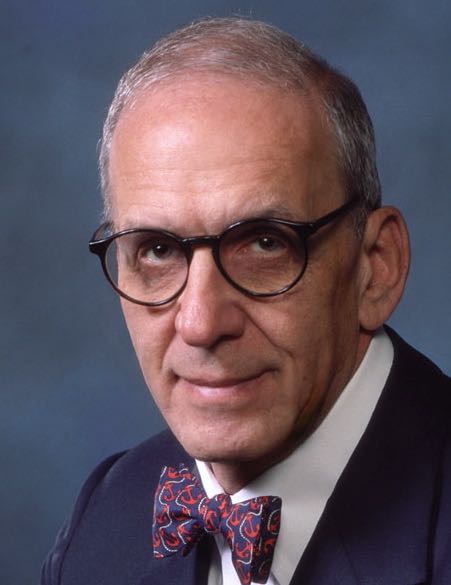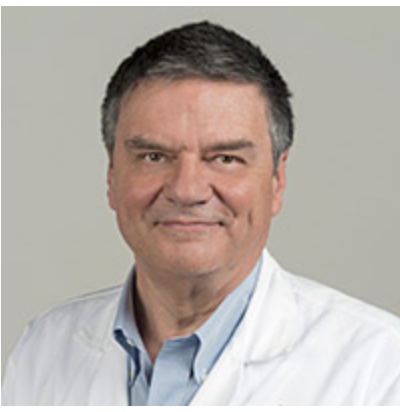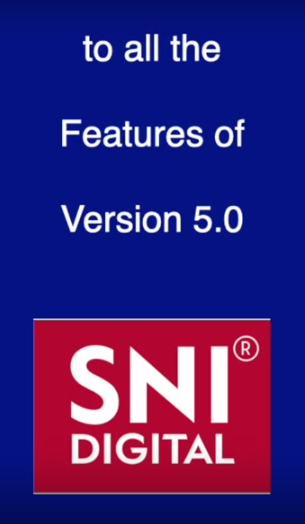0:01
Welcome to the 19th SNI and SNI, Baghdad Neurosurgery Online Meeting, held October 23, 2022. The introduction will be by the meeting originator and coordinator, Summer Haas from the Universities
0:20
of Baghdad and Cincinnati
0:25
The speaker will discuss the role of interest in making learning easier, CNS histology. The speaker is Nure M. Ocker, medical student, University of Baghdad College of Medicine, Baghdad, Iraq.
0:43
The discussion and lecture is 21 minutes Let me introduce Nure M. Ocker, third grade or? Sorry.
0:56
Sorry.
0:58
So, nor she's a fourth grade medical student and she has initially a problem with the presentations. She don't know how to present. She has some confidence issue with the presentation. She has no
1:14
experience with that. And one day, just ask me to, I want to present about some topic that, which is the topic of today, I think, which is the histology of CNS and its importance. And that was
1:32
after Dr. Osman presentation about the future of neurosurgery in the next millennium. And it represents a different experience. So from that call that she decided to give a presentation, she
1:50
worked with her colleague to improve some point of presentations and to learn from each other how to make this more interesting. And the most important for me before that presentation is that the her
2:10
experience with her colleague within the team and how they help each other. She's working with
2:22
Priba, with Hager, with Alcoza, and they are doing a very good job and their collaboration is just amazing For me, I'm observing them and how they learn from each other. It's amazing. So I'm
2:35
happy with their experience already and we are ready to listen to your presentation or and you are welcome. Introduce yourself, share your slide and begin.
2:47
Hi, I'm Laura Mijigangal for here at Nara University. I'm so excited to be here with you Today I'm going to present CMSs.
2:58
with my art idea and connect it with the neuroscience, let's restart, before we start I want to see this sketch of CNS layers, I made it inspired by talent and husbandation, as we know CNS layer
3:18
consists of gray matter and white matter, gray matter consists of neurons, neural glial cells and unminated axons, while white matter consists of neural glial cells
3:32
and marinated axons, so white is on the gray appearance because of a present part inside the mining sheet,
3:45
cerebral cortex, under macroscorp consists of six layers, depending on the cells in it, and first layer, my feeder layer,
3:56
external granular layer,
4:36
It's an upper umbrella layer, an internal granular layer, an upper umbrella layer and last layer multi form layer. This picture to make histology more interesting and more easy to remember. This
4:37
is sketch also. I made it to clarify and exemplify the histology First layer consists of horizontal cell, second layer consists of stilett cell, which is inhibitory and excitatory, third layer
4:38
consists martinote cell, fourth layer consists of stilett cell, fifth layer consists of pyramidal layer and last layer consists of fusiform layer
4:52
This is MRI figure with normal and abnormal, the abnormal on the left side. show the facement of brain with hydrocyphaly. There is another figure
5:04
of this disease. We see no cell sign or this motor brain. This disease is a dysencephaly. Dysencephaly is the disease of the horizontal cell origin.
5:18
So this is an example on dysencephaly to remember ready topics.
5:28
This is fairly under my crosscode on the right side. So we see abnormality in the molecular layers which consists of horizontal cell.
5:42
The horizontal cell function is a synthesis of a protein which is important in the radial migration during its first and second trimester So, any abnormality in these cells or the support you need to
5:54
see.
5:56
This is another example, a dress example to remember this in Italy.
6:03
Second, our topic.
6:06
This is
6:09
our villa. This villa also consists of Suhimistir with white and grey matter.
6:19
This villa cortex under microscope consists of a molecular layer, percange layer on the granular cell layer Let's go to a normality of
6:28
cortex. This is Amaraia Piguet. We show mass, which is pressure on the pathway of CSF,
6:39
leading to hydrocyperies, so this is air. We do love last summer, most common amphitheatercage group, and poor prognosis, which is
6:50
granular cell origin. Leading to metastasis, there is now, Now let's talk about the last topics.
7:02
The final chord consists of grey and white matter, and there is a central canal inside of it. This is a spinal chord under microscope, which is a consists of neurons on the neuroglial cells, and
7:16
this is the rest is a similar to spinal chord under microscope The central canal under microscope consists of open-divel cells, which is an accelerated column in our cell
7:34
Central canal disorder, first figure we see a dilated cyst, connect to central canal, so this is hydro, hydromalia,
7:46
second figure we see also cyst, but didn't connect to central canal, so this is a single malia and last figure, there is cyst, which is a extent to the medulla aplongata, so this is a pulp of
8:04
malia. This is end of my presentation, but I want to talk about my pathway in the hose mentorship until I inspire to start this idea. I'm interested in histology and when I attended the SNI Baghdad
8:22
in neurosurgery, during mentorship and when Dr. Osman explained a future of neurosurgery and medicine. Especially when he took about the rule of microphase and the rupture of aneurysm. So this
8:39
idea came to my brain, so I wanted to do something related to what I inspired a net life histology of CNS. I have another experience in multiple things like research, so this paper and this chapter
8:56
I involved in it and I'm walking on another project,
9:03
it will be submitted soon. This is a first time I used the microscope and there is another picture with the host mentorship. Today
9:16
is my presentation, I want to
9:19
thank the mentorship team to
9:22
inspire me to continue what I like to do.
9:28
I was at row only when I was the assistant. the Anatomy so this is sketch I draw it first and second
9:40
the ears and I didn't talk on my talent after I become member in the mentorship
9:48
and after seeing they use their talent and the walk on it so they inspired me to walk on my apology and they're all on the draw like this is sketch and there is another sketch I mention it during the
10:06
presentation thank you for listening and if there is any question I'm ready to answer it this is my social media account if there is anyone who want to contact me. Thank you for our presentation and
10:26
do we see you or are you ready? No, no. Okay, okay.
10:34
Yeah, very good, Norm. And again, this is at a competition who is the best illustrator in Baghdad. But
10:44
they think it's a
10:48
fascinating thing for you to actually inspire you is that the sales, I mean, if you can do, I don't know exactly, but you are oriented towards vascular But every time I see this at the story of
11:03
the sales, I wonder, and that perhaps is worth a letter to the search similarly as a Samadit for
11:15
the approaches. What determines the fate of the sale, no? The sale comes from the Periventricular area, you know, no, from the German area. Then it travels to the occipital, Travis to the
11:31
parietal, Travis to the front, and Travis to the temporal. but becomes a different identity. You have a visual cell in the occipital, you have a motor cell in the anterior and just posterior,
11:44
you have a sensory cell. What makes, how the cell knows what she, she assumes it's a feminine, I mean, what it has to do, no? And that I think is a worth of
11:60
literature research if you are interested in the surgery maybe you are more interested in the thing. But one question, and we answer as a clinicians and surgeons, that question, we may be able to
12:13
help patients with this and so far, you know?
12:16
Why, why the cell doesn't migrate? Why, why they don't arrive? Why they don't do what they were supposed to do? What's that's the theatrical process present? And some ingenious research can do
12:29
that But anyway, congratulations.
12:33
wonderful presentation.
12:37
And also, let me tell you, at the last thing, when I was at your level, I was more shy than you. So if I had to be at the presentation in Zoom, I also will black the
12:51
video, as you are doing now.
12:56
It doesn't matter. There is, there is help. There is hope. Don't worry.
13:05
Yeah. Thank you, Dr. Leder, for the comment. Yeah.
13:11
Thank you. Dr. Osman, do you have? Mustafa, do you want to say something? We're going to get other people to talk. Yeah, I just say thank you, Noor. That was a good
13:27
presentation, actually, and the team I just I want to to ask. one thing like the presentation of Dr.
13:37
Osman like in the 16th meeting about the future of neurosurgery like I talked to my colleagues like within Dr.
13:44
Ho's team like like all of us almost like inspired by this presentation and yeah many ideas like jumped out of this presentation
13:55
at that time but much like I will share also my experience and yeah I just want to stress on this point like the 16th presentation of Dr. Osmond was inspired and truly mainly yeah thank you.
14:09
Yeah thank you.
14:16
I enjoyed that
14:19
it's a very good way to learn as to make diagrams and when you showed the cellular diagrams of the cortex there was a paper that was just published recently in Science made you see. trying to compare
14:32
the cortex of primates
14:53
to lower level primates and
14:56
what it showed is that there was a more cellular population that was talking about the frontal lobes in the areas you were talking about at certain levels, which then leads the more mature developed
15:01
primate ourselves to be able to think and do other things that we can't do earlier, but so all the things that you're doing relate to new discoveries that are being made, so very interesting.
15:23
I just want to comment on notes
15:27
and stretching, it was really wonderful. and amazing. I like how she converted the histological section to a simple and informative illustration. So I really motivate her for becoming more to work
15:43
on her skills more and more. Thank you for your presentation. Thank you.
15:50
Yeah, I think when she first asked me, I want to give a lecture about histology in this and I, I said what, histology will be interesting. And, and the topic was quite material, but I think she
16:10
gave us some ideas because this is more about junior medical student teaching. And now while she choose the dressing thing and the cartoon thing, I think this is just an ideas for to make basic
16:27
science more interesting. I congratulate North for that presentation. For me, it's very good. She has a language problem initially. I didn't notice there is a language problem with that
16:39
presentation. And for,
16:44
and I'm sure she's not shy, not sharing the video, but I have that experience with her before that she has a very busy house, always the children don't put during presentations.
17:00
Yeah, so thank you and I congratulate you for that presentation. It's an achievement, I think a few weeks before you are dreaming of this.
17:17
Thank you. Thank you, I also for your message and thank you for, and
17:23
I want to thank the part of our day for voice.
17:26
That she sent me for me. presentation.
17:33
Thank you so much. Thank you so much. I also want to say that thank you so much for this interesting presentation. I did enjoy the histology.
17:46
We hope you
17:56
enjoy these presentations The information provided in this program is for informational purposes and is not intended for use as diagnosis or treatment of a health problem or as a substitute for
18:10
consulting a licensed medical profession.
18:16
Please fill out your evaluation of this video to attain CME credit
18:24
This recorded session is available free. on
18:30
snidigitalorg. Send your questions or comments to osmondsnidigitalorg. This program has been supported by the James I. and
18:43
Carolyn R. Osmond Educational Foundation, owner of SNI and SNI Digital, and The Waymaster Corporation, producers of the Leading Gen Television Series, silent majority speaks and role models, and
19:02
the new Medical News Network.
19:30
Thank you



